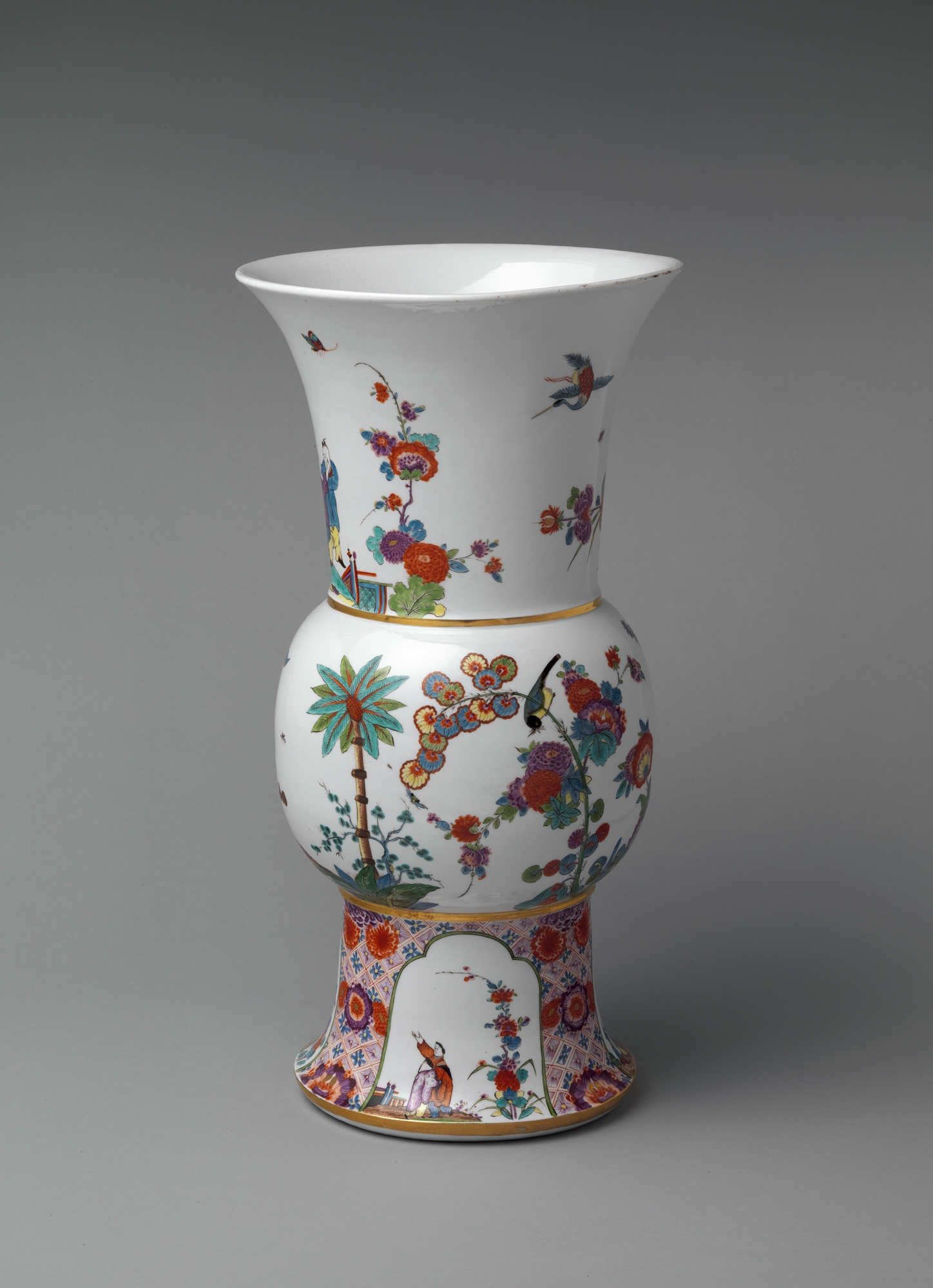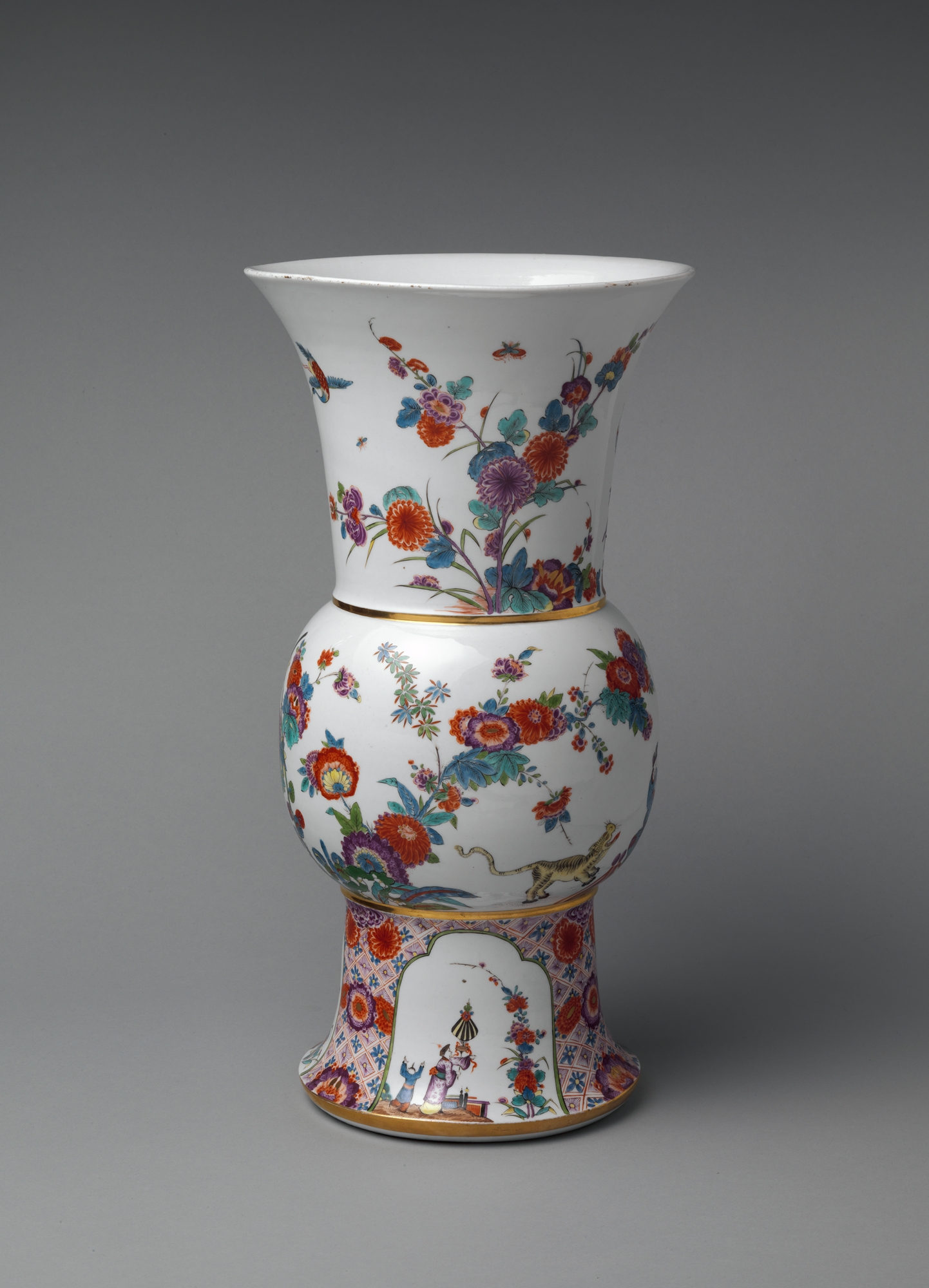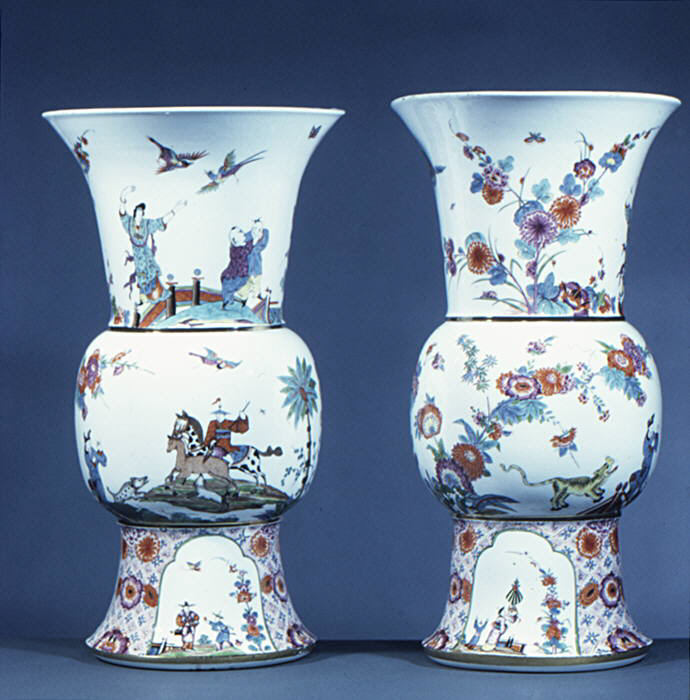Vase (one of a pair)
Manufactory Meissen Manufactory German
After a print by Peter Schenk
Not on view
The majority of the porcelain enterprises established on the Continent in the eighteenth century were generally founded and supported by royal or noble patrons, and the funding that they provided was critical to the survival of the factories, which rarely if ever operated at a profit. This financial support also meant that the production of the factories often reflected the taste of the patron rather than the taste of a market to which it had to cater. The passion for the medium itself was the motivation for many of those who founded factories, as well as the prestige accrued from owning such an operation, making the financial return very much a secondary concern. In no instance was this more the case than with Augustus the Strong, whose obsessive interest in porcelain led to the founding of the Meissen factory in 1710 (entry 10). The early history of Meissen has been thoroughly researched and studied thanks to the factory’s distinction of being the first in Europe to discover the formula for hard-paste porcelain.[6] With the backing and active interest of Augustus the Strong and later from his son August III (1696–1763), Meissen became the preeminent factory in Europe during the first half of the eighteenth century. Its artistic success, coupled with its remarkable technical accomplishments, contributed enormously to the prestige of porcelain and to the benefits of factory ownership (64.101.147). Numerous factories were established in Germany in the mid- eighteenth century by royal and noble patrons, and Karl Eugen (1728–1793), Duke of Württemberg, remarked that a porcelain factory was “a necessary attribute of the glory and dignity of a prince.”[7] In contrast to France, all of the enterprises on German soil produced only hard- paste porcelain, which was indirectly due to the influence of Meissen. Because the formula for hard- paste porcelain was avidly sought by people intent on establishing factories, Meissen zealously attempted to guard its recipe from competing enterprises, but departing workers took their technical knowledge with them. The second porcelain factory in Europe to make hard-paste porcelain was founded in 1718 by Claudius Innocentius Du Paquier (d. 1751) in Vienna, and his success was largely based on the assistance provided by workers formerly employed at Meissen (entry 28). By the 1750s, it was not uncommon for potters to travel from one factory to another, which resulted in new factories being founded with the expertise gained elsewhere.
Footnotes
(For key to shortened references see bibliography in Munger, European Porcelain in the Metropolitan Museum of Art. NY: The Metropolitan Museum of Art, 2018)
[6] For a history of the factory, see Nelson 2013, pp. 117–83.
[7] Coutts 2001, p. 124.
Due to rights restrictions, this image cannot be enlarged, viewed at full screen, or downloaded.
This artwork is meant to be viewed from right to left. Scroll left to view more.





